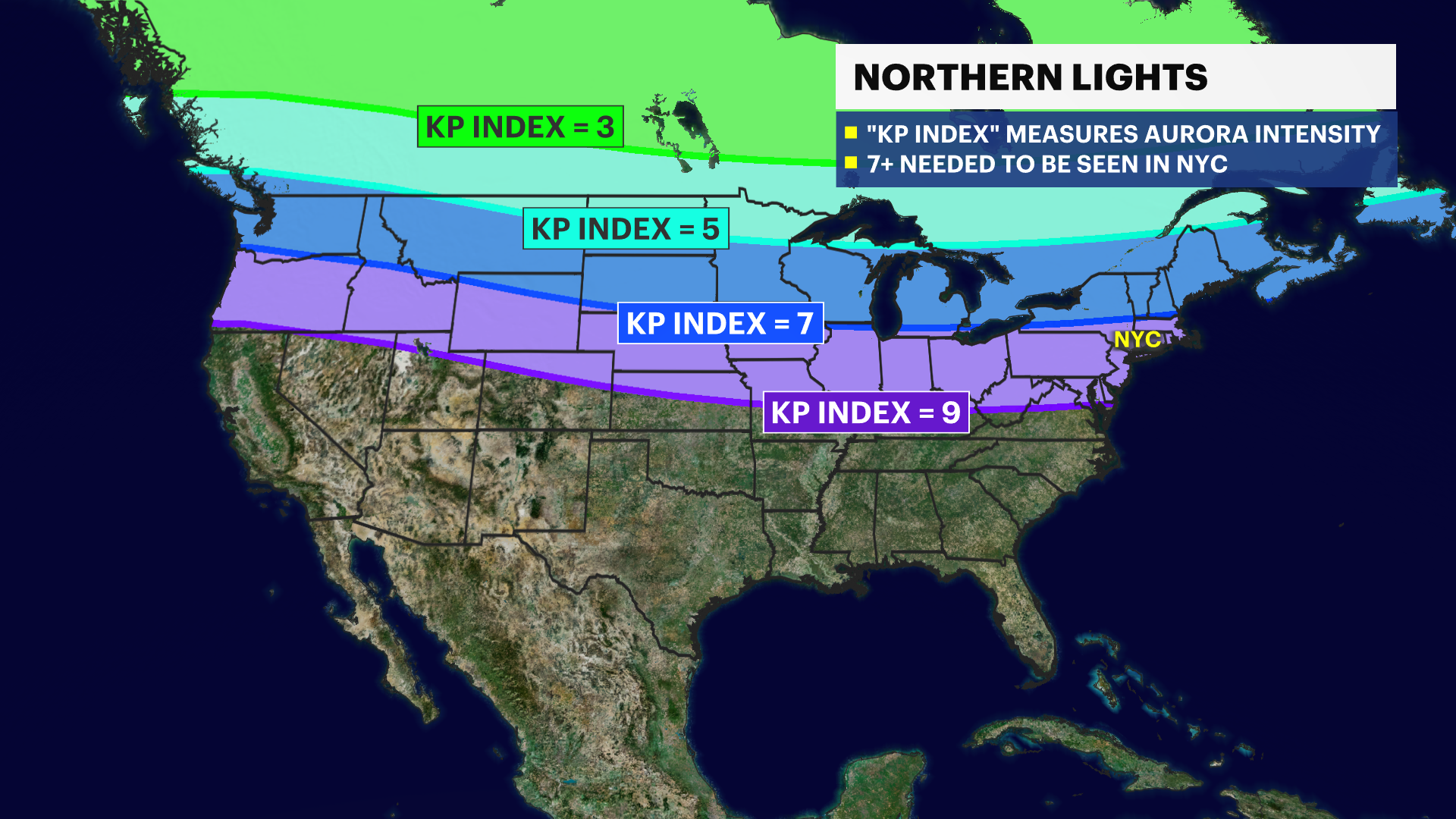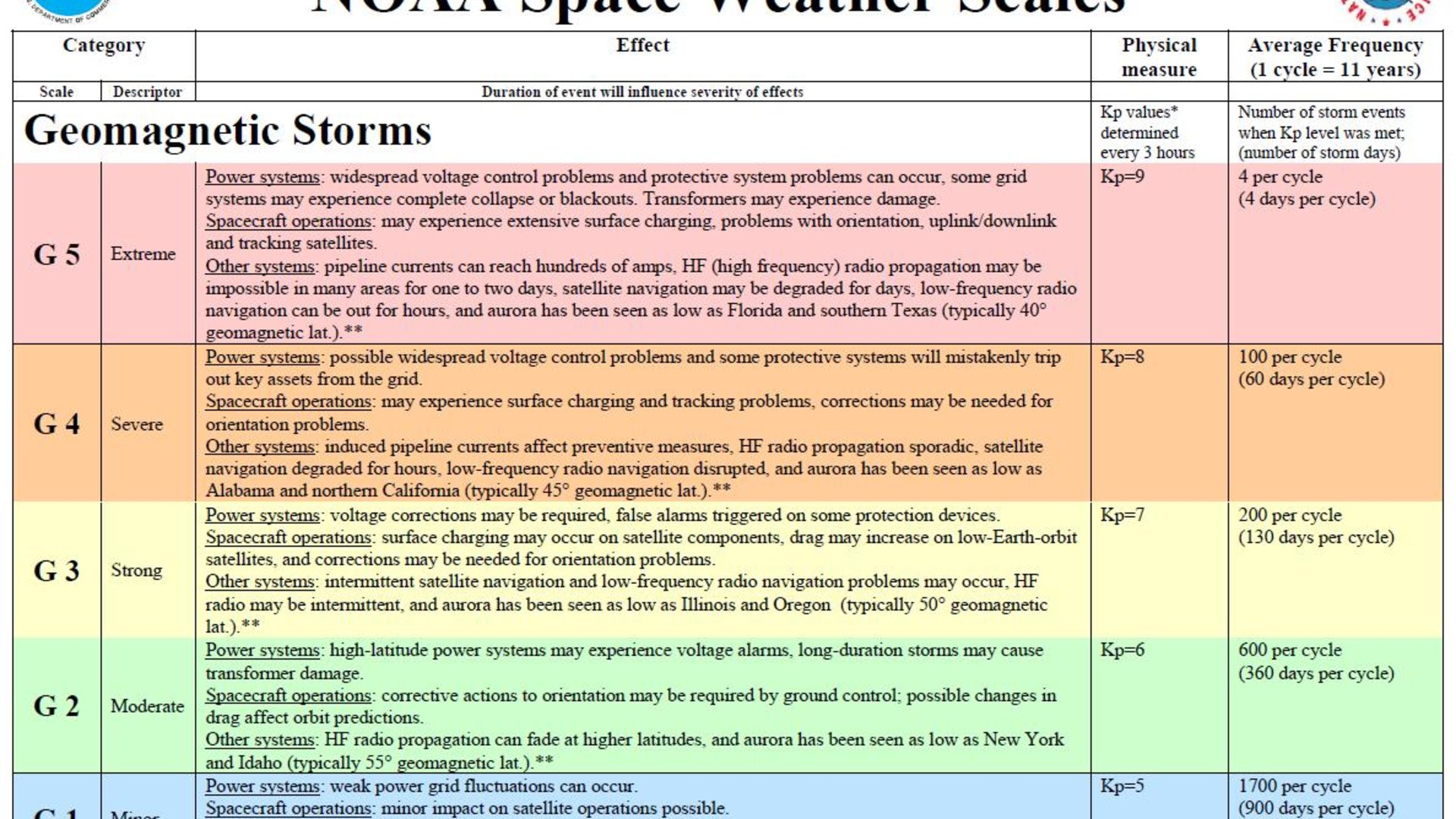More Stories
There’s a good chance some may be able to see the northern lights late tonight and early Friday in the Northeast. In the last couple of days, there have been several expulsions of plasma ejected from the sun that are now heading quickly toward Earth. They are known as coronal mass ejections or CMEs. The last one was the strongest and will meet up with the other three already on their way.
This prompted NOAA’s Space Weather Prediction Center to upgrade their geomagnetic storm watch to a level G3. This level is considered a strong storm and ultimately can produce aurora, or the northern lights at lower latitudes than normal.

NOAA’s Space Weather Forecasters rate these geomagnetic storms on a scale of G1-G5, with 5 being the strongest. Each level has different characteristics and effects, including aurora brightness.
The K-index or planetary K-index is used to characterize the magnitude of the geomagnetic storms. The scale goes from 0-9, with 1 being calm to 5 or higher indicating a geomagnetic storm. It helps the SWPC decide whether geomagnetic watches or warnings are needed. These warnings are primarily for the electoral grid, spacecraft operations, radio operators and even aurora enthusiasts.
 Courtesy: NOAA
Courtesy: NOAA
In order for the tri-state area to see the northern lights, usually a very strong storm is needed and sometimes one stronger than a G3. In the past recent weeks and months, aurora activity was seen nearby (in darker, remote areas) with a Kp index of 6. Usually, a Kp index of 7 or higher is needed due to the amount of light pollution in the area.

A G3 can produce a Kp index of up to 7. Often, we don’t know the exact range until the event is underway. Back in October 2003, there was a very strong geomagnetic storm with a Kp index of 9. This was the last time such a strong storm erupted and the northern lights were seen in New Jersey.
There may be many more opportunities to see the northern lights over the next year. The sun has entered into a very active period in its cycle and could peak early next year. The solar maximum can last up to two years before things settle down, typically it takes roughly four years to transition from a solar minimum to a solar maximum.
More from News 12

Pope Leo XIV urges the faithful on Christmas to shed indifference in the face of suffering
0:20

Pedestrian critically injured in East Rutherford crash
0:22

Man wanted for stealing mandolins from Teaneck music store
2:08

'We don't want you here.' Passaic restaurant goes viral after receiving anti-Muslim letter
1:49

Gov. Murphy expected to sign bill banning cell phone usage in NJ schools
1:58
